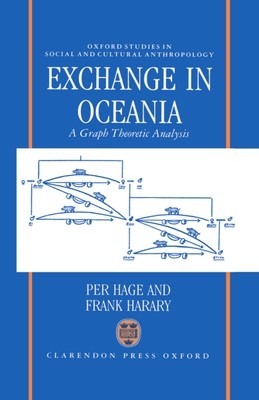
- We will send in 10–14 business days.
- Author: Per Hage
- Publisher: Clarendon Press
- ISBN-10: 0198277601
- ISBN-13: 9780198277606
- Format: 14.7 x 22.8 x 2.6 cm, hardcover
- Language: English
- SAVE -10% with code: EXTRA
Reviews
Description
In their previous book, Structural Models in Anthropology, Hage and Haray used graph theory, a branch of pure mathematics, to develop a family of models for the study of social, symbolic, and cognitive relations. With Exchange in Oceania the authors extend these models using ethnographic data from Melanesia, Micronesia, and Polynesia to demonstrate that the language, techniques, and theorems of graph theory provide the essential basis for the description, quantification, simulation, enumeration, and notation of the great variety of exchange forms actually found in Oceanic societies.
EXTRA 10 % discount with code: EXTRA
The promotion ends in 13d.19:48:41
The discount code is valid when purchasing from 10 €. Discounts do not stack.
- Author: Per Hage
- Publisher: Clarendon Press
- ISBN-10: 0198277601
- ISBN-13: 9780198277606
- Format: 14.7 x 22.8 x 2.6 cm, hardcover
- Language: English English
In their previous book, Structural Models in Anthropology, Hage and Haray used graph theory, a branch of pure mathematics, to develop a family of models for the study of social, symbolic, and cognitive relations. With Exchange in Oceania the authors extend these models using ethnographic data from Melanesia, Micronesia, and Polynesia to demonstrate that the language, techniques, and theorems of graph theory provide the essential basis for the description, quantification, simulation, enumeration, and notation of the great variety of exchange forms actually found in Oceanic societies.


Reviews